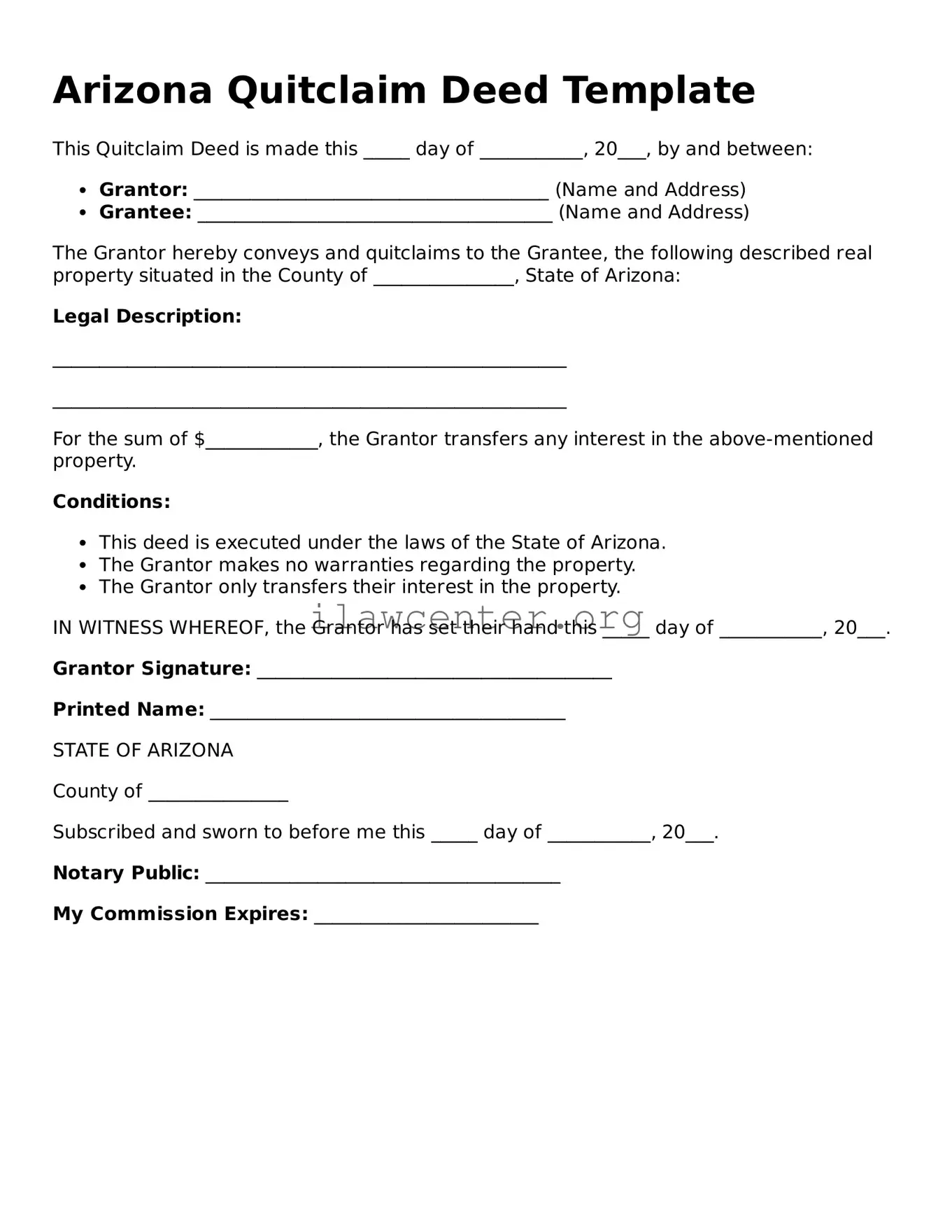Instructions on Utilizing Arizona Quitclaim Deed
Completing the Arizona Quitclaim Deed form requires careful attention to detail. Once filled out, the form will need to be signed and filed with the appropriate county recorder's office. Before you begin, ensure you have all the necessary information at hand for a smooth and effective process.
- Obtain the Quitclaim Deed form. You can find it online or at your local county recorder’s office.
- Fill in the current owner's information. Write the full legal name(s) of the person or entity transferring the property.
- Enter the grantee's information. List the full legal name of the person or entity receiving the property.
- Describe the property. Provide a complete legal description of the property being transferred. This may include the parcel number and physical address.
- Indicate the consideration. Write the amount paid for the transfer. If it is a gift, you can enter “Gift” or “N/A.”
- Sign the form. The current owner(s) must sign the document in the presence of a notary public.
- Have the document notarized. A notary will verify the identities of the signing parties and affix their stamp to the document.
- Submit the Quitclaim Deed. File the completed form with the county recorder’s office in the county where the property is located. Be prepared to pay any required recording fees.
Following these steps will ensure that your Quitclaim Deed is properly completed and filed. Keep a copy for your records, as it serves as your proof of the transaction.
